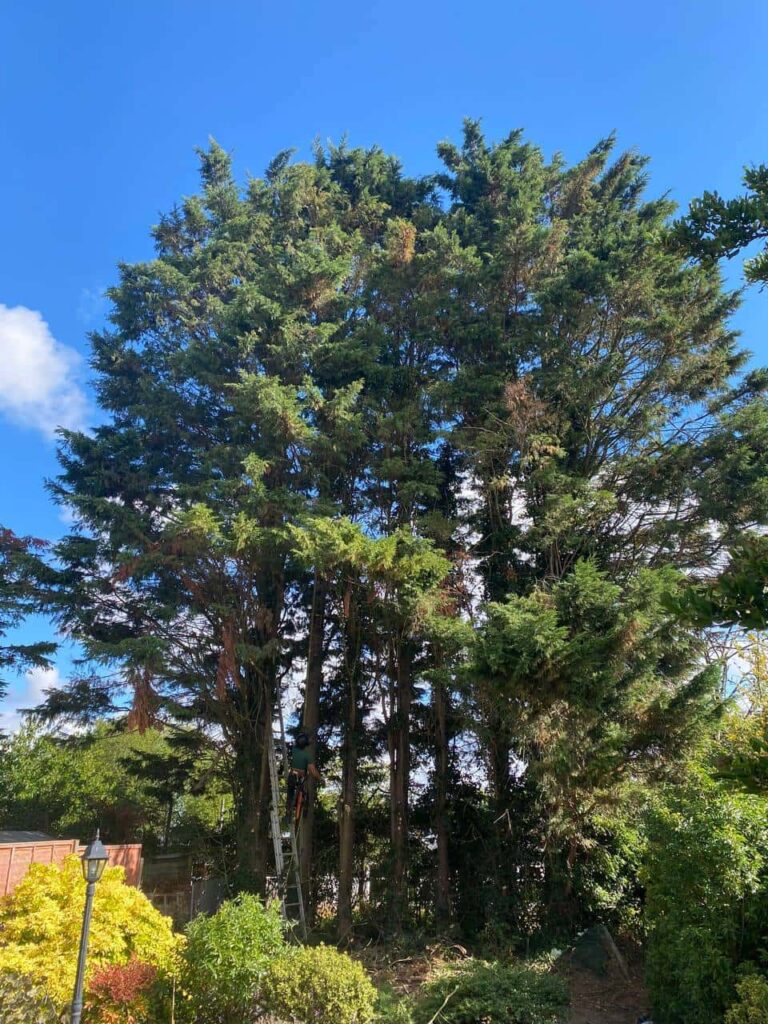Introduction: Hedges are not just static green barriers but dynamic components of your landscape that require proper care and attention to thrive. One crucial aspect of hedge maintenance is ensuring adequate air circulation and sunlight exposure. Proper hedge-cutting techniques can help optimise these factors, promoting the health and vitality of your hedges while enhancing the overall aesthetics of your outdoor space. In this blog post, we’ll explore the importance of air circulation and sunlight exposure in hedge cutting and share tips on achieving optimal conditions for your hedges.
Understanding the Importance of Air Circulation:
- Good air circulation is essential for maintaining the health of hedges and preventing common issues such as fungal diseases and pest infestations. Dense, overgrown hedges with limited airflow create a favourable environment for moisture buildup and fungal growth. Trimming hedges regularly to promote air circulation can reduce humidity levels, minimise disease risk, and improve overall hedge health.
Promoting Sunlight Exposure:
- Sunlight is vital for the photosynthesis process, which is essential for the growth and development of plants. Hedges that receive adequate sunlight exposure tend to be healthier, more robust, and better able to withstand environmental stressors. However, dense foliage or overgrown branches can block sunlight from reaching the lower parts of the hedge, resulting in sparse growth and reduced vitality. Proper hedge-cutting techniques can help open the canopy, allowing sunlight to penetrate and reach all the hedges.
Pruning for Airflow and Light Penetration:
- When trimming hedges to improve air circulation and sunlight exposure, focus on thinning out dense areas and removing excessive growth. Start by identifying overcrowded or crossing branches hindering airflow and light penetration. Use sharp, clean pruning tools to selectively remove these branches, opening up the interior of the hedge and allowing air and sunlight to reach the lower branches and foliage.
Adopting Correct Hedge Cutting Techniques:
- Proper hedge-cutting techniques are essential for achieving the desired results while minimising plant stress and damage. Avoid drastic or indiscriminate pruning, which can weaken the hedge and compromise health. Instead, aim for gradual, selective pruning that maintains the natural shape and structure of the hedge while improving airflow and light penetration. Regular maintenance trimming, performed at the appropriate times of year, can help keep hedges healthy and vibrant.
Maintaining a Balanced Approach:
- While promoting air circulation and sunlight exposure is important, it’s also essential to strike a balance and avoid over-pruning. Removing too much foliage can stress the hedge and leave it vulnerable to environmental factors. Additionally, consider the specific needs of the hedge species and adjust your pruning practices accordingly. Some species may require frequent trimming to maintain optimal conditions, while others may be more tolerant of dense growth.
Conclusion: Ensuring proper air circulation and sunlight exposure is essential for maintaining the health and vitality of your hedges. Correct hedge-cutting techniques can promote airflow, reduce disease risk, and improve hedge health. With a balanced approach to hedge maintenance, you can create a thriving and beautiful landscape that enhances the beauty and enjoyment of your outdoor space.
Call us on: 01842 771 096
Click here to find out more about Mundford Tree Surgeons
Click here to complete our contact form and see how we can help with your tree’s needs.

